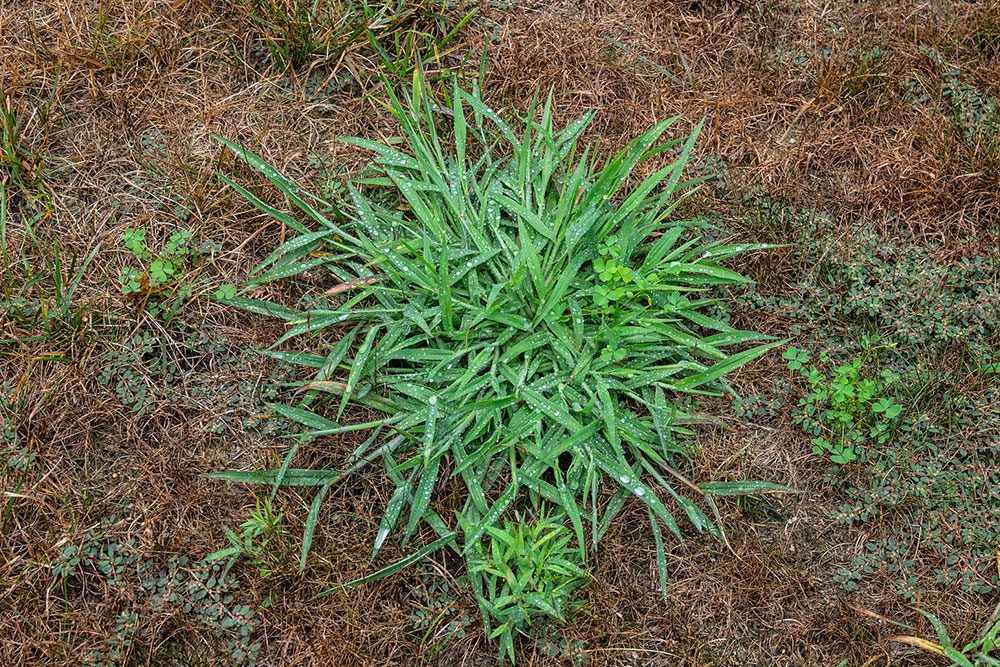8 Ways to Get Rid of Quackgrass
Taking care of a garden goes beyond planting and watering plants. One of the most important tasks to ensure the garden is well-nourished and long-standing is to remove weeds like quackgrass. This particularly aggressive weed tends to live for several years and can grow up to 4 feet tall. If it isn’t eliminated from time to time, it may soak up the soil nutrients and hinder the growth of other plants and grass.
How to identify quackgrass?
These weeds have leaves with wide blades that are rough to touch and usually quite tall. They have clasping auricles at the base of the leaf blade.

How to get rid of quackgrass?
There are several ways to kill quackgrass.
Ways to get rid of quackgrass without chemicals
1. Overseed the lawn
One of the most effective ways to get rid of quackgrass is overseeding the lawn or areas with desirable plants and grass. Grass seeds can fill in the gaps between the grass blades. While results may not be seen immediately, the new grass can thwart quackgrass growth. One can use more than 2 lb or 0.91 kg of seed for every 1,000 sq ft of soil. Remember that some grasses, like ryegrass, may need more seeds.
2. Water the grass well
To ensure healthy new growth, water the grass at least twice daily and don’t let the seeds dry out, which can otherwise lead to patchy growth. It’s best to keep the soil moist for about 14 days to help the seeds germinate. After that, one can water the lawn about thrice a week.
3. Mow the grass
Once the grass grows beyond 3 inches, it’s best to mow it. This will also ensure that the quackgrass doesn’t overgrow the lawn. With more germinated grass seeds, they will eventually outgrow the quackgrass. Be careful not to cut the grass too short. This can cause the quackgrass to spread more aggressively by damaging the root system and causing new plants to divide and take over the space.
4. Solarization
This is a non-selective herbicide treatment that kills quackgrass. Here, a sheet of clear plastic is placed or anchored above the patches of quackgrass with rocks, bricks, and other solid heavy items. Ensure the sheets are about 3 inches beyond the quackgrass areas so they do not grow further. The plastic concentrates the sun’s heat, which effectively burns the weeds. After solarization, one can cover the area with more grass seeds. One may have to monitor the area to prevent the regrowth of quackgrass. Remember that solarization also kills off other plants trapped beneath the sheet. So, it is best to use this method only for a larger patch of severe quackgrass growth. Having said that, if any desirable plants get trapped and killed due to solarization, one does not need to weed them out. They can be tilled back into the soil to generate natural fertilizer.
5. Pull the quackgrass out by hand
Another safest, easiest, but time-consuming process to kill quackgrass is to dig a one-foot-wide hole near the quackgrass with a fork and pull the plant from its roots. This process might be difficult if the weeds are healthy since quackgrass is infamous for growing farther than one may expect. So, one should check if one has uprooted the entire plant to avoid broken roots that may sprout new patches.
6. Smothering
This is another effective method of getting rid of quackgrass. Smothering the weed with mulch or adding a few inches of wood chips can help eliminate it. One can also lay down landscape fabric to prevent it from popping up.
Ways to get rid of quackgrass with chemicals
1. Use herbicide
This is another method that offers a selective weed-killing option. Here, herbicide is sprayed only on the targeted weeds. One should dilute the herbicide in water, point to the area with quackgrass, and spray it using a nozzle setting. It’s important to wear proper gloves and masks before using herbicide.
2. Spread fertilizer
Apart from trimming and overseeding, another way to ensure quackgrass doesn’t take over the lawn is to spread nitrogen fertilizer about once every couple of weeks. The nitrogen boosts grass growth, making it healthier and thicker, but it also kills quackgrass.
Getting rid of quackgrass is not a quick process since it can survive for a long time. Proper maintenance, including mowing and preventing new growth by hand plucking, can help control its growth, and eventually, the weeds will get smaller each year. At times, it may be tough to identify quackgrass and other weeds, especially for newbie gardeners. In such cases, it’s best to contact a professional lawn care service for personalized advice on which process would work best for one’s garden.

